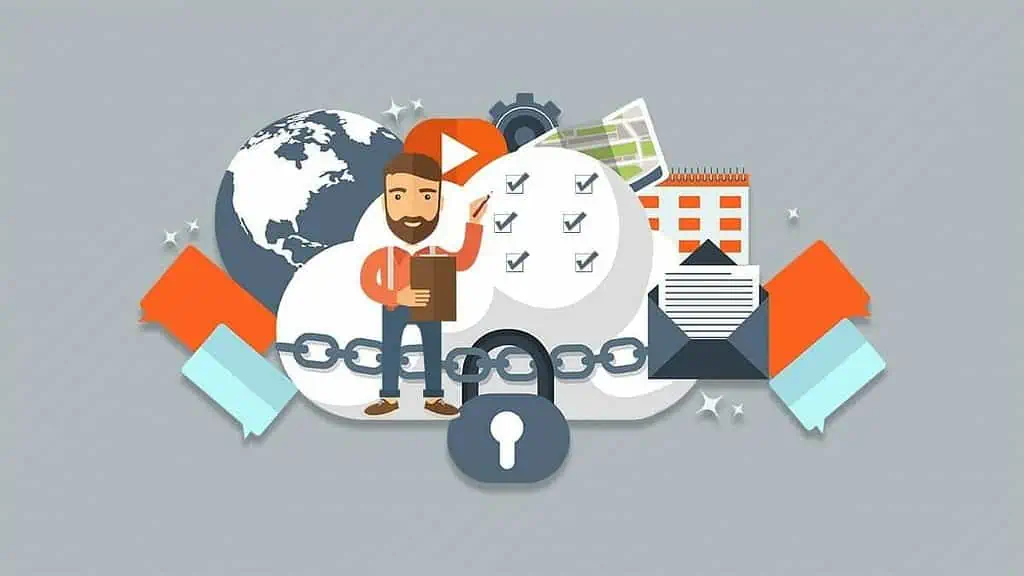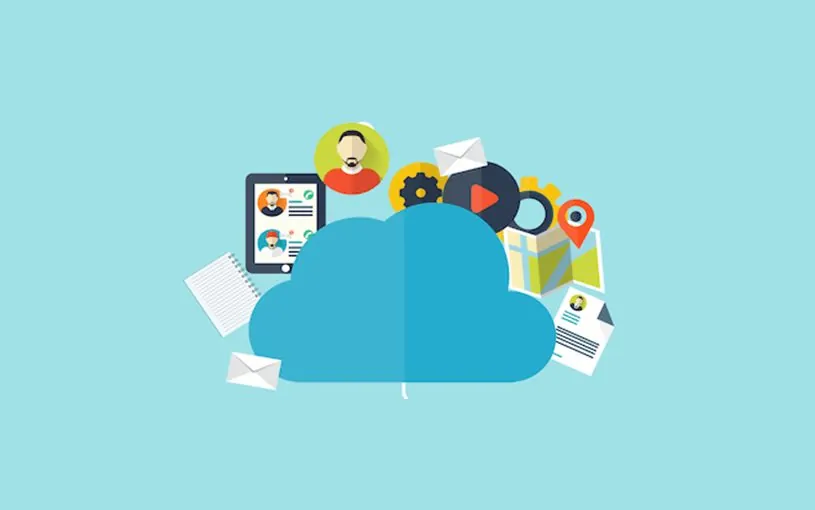Unveiling crucial cybersecurity measures, learn how to fortify your online business against data breaches, malware, and sophisticated cyberattacks.
Table of Contents
Understanding the Threat Landscape
In the face of advanced cyber threats; it is essential to understand the complex landscape they present. Knowledge about types of attacks and common methods of intrusion is pivotal in crafting a robust defense strategy.
Deciphering cybersecurity begins with a fundamental grasp of the ever-evolving threat landscape. By decoding common and complex threats, businesses can adapt their defense mechanisms effectively.
Types of Cybersecurity Threats
In the vast digital terrain, various menacing and multifarious cybersecurity threats lurk, perpetually posing an imminent risk to your online business.
- Malware attacks: These include viruses, worms, Trojans, ransomware, and spyware, intended to damage your system or gain unauthorized access to your data.
- Phishing attacks: These involve fraudulent communication designed to deceive users into revealing confidential information like login credentials or credit card numbers.
- Man-in-the-middle (MitM) attacks: These occur when attackers interrupt and infiltrate communication between two parties to steal data.
- Denial-of-Service (DoS) attacks: Attackers overload your network, effectively making it inaccessible, potentially causing significant business interruption.
- SQL injection attacks: Attackers take advantage of vulnerabilities in your application’s database to manipulate your data.
- Cross-Site Scripting (XSS) attacks: These are targeted towards your website’s users rather than the website itself, deceiving them by injecting malicious scripts into web pages.
- Zero-day exploits: These are attacks that occur due to unknown vulnerabilities in software or hardware for which no official fix is available.
Common Attack Methods
Cybercriminals have an arsenal of attack methods they deploy to infiltrate online businesses. These include tactics such as phishing, malware, ransomware, Distributed Denial of Service (DDoS), and password attacks.
- Phishing: This tactic involves sending misleading emails that seem to be from legitimate sources, tricking individuals into revealing sensitive data.
- Malware: Short for ‘malicious software’, this involves the use of viruses, worms, or trojans, which interrupt or damage a computer’s operations.
- Ransomware: This is a subtype of malware that encrypts the victim’s files and demands a ransom to restore access.
- Distributed Denial of Service (DDoS): .This attack overwhelms a network or a website with heavy cyber traffic, causing it to become slow or inoperable.
- Password Attacks: Tactics used to forcefully uncover a person’s password, such as brute force attacks or credential stuffing.
Implementing Strong Password Policies
A robust password policy is the first line of defense against cyberattacks, shielding your business from unauthorized access. Like a digital gatekeeper, your password policy ensures access only to those who have the correct keys.
A sophisticated password policy acts as a sophisticated lock system, reinforcing your business’s cybersecurity while discouraging hackers and unauthorized entities.
Businesses should create and enforce strong password policies not only for their digital assets but also for network devices, operating systems, and other software. Encourage updating passwords regularly and implementing multi-factor authentication.
A sophisticated password policy boosts the security of your online business, keeping hackers at a distance. It’s about turning your business into a fortress, with passwords being the intricate series of locks on your digital gates.
Creating Secure and Unique Passwords
Mastering the art of creating secure and unique passwords is crucial to the safety of your online business. A strong password serves as the first line of defense against cyber-attacks and data breaches.
- Avoid using personal information such as birthdates or names in passwords.
- Incorporate a variety of characters including uppercase letters, lowercase letters, numbers, and symbols.
- Advocate for passwords to be at least 12 characters long.
- Avoid dictionary words and common phrases.
- Change passwords regularly and avoid reusing the same password for multiple accounts.
Enforcing Password Complexity
The role of password complexity in bolstering cybersecurity for online businesses cannot be understated. This practice significantly mitigates the risk of breaches by making it exponentially harder for cybercriminals to decode passwords and gain unauthorized access.
- Mandate a minimum length for passwords, typically eight characters or more
- Require a mix of uppercase, lowercase, numeric, and special characters
- Prohibit the use of sequential or repetitive characters
- Disallow common passwords and personal information
- Enforce periodic password changes, while banning repetition of previously used passwords
- Encourage the use of Password Managers for storing complex passwords securely
Implementing Two-Factor Authentication
As an online business, implementing two-factor authentication (2FA) adds an additional layer of security to your systems. This could help considerably in reducing the cyber risks your business faces.
- Two-factor authentication requires the user to present two forms of identification typically a password and a secondary confirmation like a temporary code sent to a mobile device.
- By enforcing two-factor authentication, the likelihood of unauthorized access gets substantially reduced even if a user’s password gets compromised.
- It serves as a deterrent to brute force and credential stuffing attacks.
- It is exceptionally beneficial for protecting sensitive data on admin accounts.
Securing Your Network and Devices
To fortify your network and devices against cyber threats, regularly update software and systems, utilize firewalls and antivirus software, and employ encryption alongside VPNs. These are proactive measures taken to keep harmful intruders at bay.
Securing your network and devices is not just an option but a must for any online business. A compromised network could lead to data breaches, loss of customer trust, and crippling financial damage, implying that robust security measures are crucial for business continuity.
Keeping Software and Systems Up to Date
Outsmarting cyber intruders necessitates diligent software updates. Regular updates serve as an effective shield, patching vulnerabilities that can be exploited.
An updated system is key to maintaining your online business’s security. Keep your system updated to not only benefit from added features but thwart potential security threats effectively.
Using Firewalls and Antivirus Software
Firewalls and antivirus software are the shields of your online business, repelling cyber criminals’ advances proactively. They scrutinize incoming and outgoing data, blocking suspicious activity to fortify your business against unwarranted intrusions.
In a landscape where new threats sprout daily, firewalls and antivirus software constantly adapt, acting as an evolving cyber deterrent. They remain updated on the latest threats, providing continuous, real-time protection against malicious activities.
View them as your digital warriors, maintaining the integrity of your business. Firewalls deny unauthorized access, while antivirus software targets and eliminates harmful software. Used collaboratively, they form a robust line of defense, keeping your business safe from cyber villainy.
Encrypting Data and Using VPNs
Encryption is like the bodyguard for your business data. It’s a vital layer of your security infrastructure, scrambling sensitive information in a way readable only to authorized users, protecting your business from data breaches.
Virtual Private Networks (VPNs) can fortify your business’ digital protection shield. As a tunnel between your network and the internet, a VPN prevents unauthorized access, preserving confidentiality even when using unsecured public networks.
Implementing both encryption and VPNs can supercharge your cybersecurity. Together, they ensure that even if attackers somehow bypass other defense lines, they are still kept at bay from precious business data.
Educating Your Employees on Cybersecurity Best Practices
Imparting cybersecurity knowledge proves crucial, acting as a business’s first line of defense. A well-informed workforce can identify threats before they wreak havoc, significantly reducing the risk of breaches. This foundation stems not just from awareness, but the ability to act swiftly and decisively.
The imperative of equipping employees with cybersecurity techniques cannot be overstated. Regular training sessions, workshops, and simulations arm them with essential skills to combat potential cyber-attacks, ensuring the organization’s online infrastructure remains secure against increasingly sophisticated threats.
Training Employees on Identifying Phishing Emails
Phishing emails are a cyber criminal’s preferred weapon, often designed to look like legitimate requests for personal or sensitive company data. Your employees need to be adept at identifying these carefully crafted traps. Recognizing fraudulent login pages, spoofed email addresses and questionable links is crucial.
This makes anti-phishing techniques a business necessity. Regular drilling and training sessions should be an integral part of your company’s cybersecurity strategy. Tests that simulate phishing scenarios will help to gauge employee awareness and response.
Remember, an informed team is the best defense against these intrusive attacks. Empower your employees with the necessary skills to spot and report suspected phishing attempts, safeguarding the entire business ecosystem from potential data breaches and malware infections.
Promoting Safe Internet Browsing Habits
Inculcating safe browsing habits, also known as internet hygiene, is fundamental for the health of your online business. Browsing vigilantly and avoiding suspicious links can drastically reduce the risk of phishing or malware attacks.
Implementing secure online practices positively affects not just your business’s cybersecurity but also its reputation with clients. Customers feel more at ease when they know their data is safe, a trust built by promoting secure internet browsing habits.
Raising Awareness on Social Engineering Attacks
Social engineering attacks may seem less dramatic than malware or data breaches, but they can cause just as much damage. Educating your team about the dangers and signs of these silent threats is critical. This can be done by running regular workshops or discussions.
Moreover, your employees can become your strongest defense against these attacks. This ‘human firewall‘ can protect your business from scammers who often exploit human tendencies like trust or helpfulness. Foster a culture where security is everybody’s shared responsibility, not just the tech team’s task.
Backup and Recovery Strategies
Consistent data backup is a critical element in ensuring business continuity, allowing a swift restoration of business operations should a cybersecurity incident occur. By implementing a resilient recovery plan, you establish an effective response method to cyberattacks, where swift data recovery and security breach remediation become a seamless process.
Regularly Backing Up Data
Regular data backups are the safeguard to the continuity of your business. By mirroring critical data, you fortify your online business against unrecoverable losses from cyberattacks or physical damage.
Establishing a regular data backup routine is akin to investing in a business lifeline. Scheduled, automated backups minimize the risk of data loss, securing the operational resilience of your online business, and bolstering its defense against cybersecurity threats.
Testing and Verifying Backup Systems
Creating a robust system necessitates the testing and verification of backups. Inconsistent validation of backup data could lead to the discovery of corrupted files at the worst possible time – during a crisis.
Backup assessment plays a pivotal role in identifying your recovery plan’s strengths and weaknesses. It enables you to rectify deficiencies in advance, ensuring your business springs back to operation smoothly post any unprecedented disaster.
Developing a Disaster Recovery Plan
Knowing how to respond when disaster hits keeps digital catastrophes at bay. A comprehensive disaster recovery plan details steps to recover data, safeguarding your business against severe damages.
Developing a strategic disaster recovery plan is the blueprint for business continuity. These plans serve as the lifeline for organizations to resume operations swiftly and securely after a cybersecurity incident.
Continuous Monitoring and Incident Response
In the shifting sands of cybersecurity, the benefits of continuous monitoring are twofold, serving both as a deterrent to potential attackers and ensuring a swift response to any threats that emerge. Non-stop vigilance helps identify vulnerabilities, nipping potential breaches in the bud before they can significantly impact your business.
When a breach occurs, the effectiveness of your incident response plan can determine whether it’s a minor setback or a critical blow. This plan, likened to the first aid of cybersecurity, guides swift containment and eradication of threats, helps recover operations with minimal downtime, and bolsters post-incident audits for optimal future prevention.
Implementing Intrusion Detection Systems
The intrigue of intrusion detection lies in its ability to spot stealthy attacks, often invisible to the human eye. These systems continually monitor your network, detecting suspicious activity and alerting you before any major harm can occur.
Equipped with advanced algorithms and machine learning, modern intrusion detection systems aid in deciphering normal network behavior from potentially harmful anomalies. It’s an essential tool in your cybersecurity toolbox for preventing unseen threats.
It’s not an overstatement to say intrusion detection systems can be the difference between a secure network and a devastating cyber attack. This form of continuous monitoring can significantly reduce your business’ risk profile, enhancing overall cybersecurity health.
Creating an Incident Response Plan
Implementing a carefully drafted incident response plan is a proactive means to minimize damage from cyber threats. The plan puts into motion the steps to be taken immediately when a breach occurs, ensuring swift containment.
Consider an incident response plan as your business’s secret weapon against cyber attacks. It promotes organized action and timely recovery, and significantly reduces the risk and impact of potential security breaches.
Performing Regular Security Audits
To guard against latent security threats, regular security audits are a critical defense mechanism. This process identifies and rectifies vulnerabilities, safeguarding your business from potential cyber-attacks.
Regular security checks are a proactive measure that helps ensure the robustness of your cybersecurity approach. Beyond mere detection, audits work to protect; bolstering your defenses and keeping your online business one step ahead of cybercriminals.



